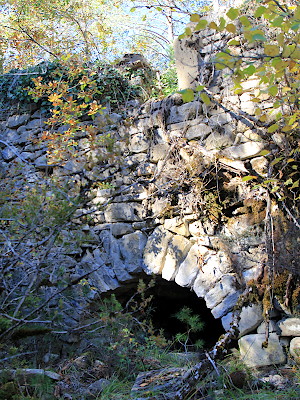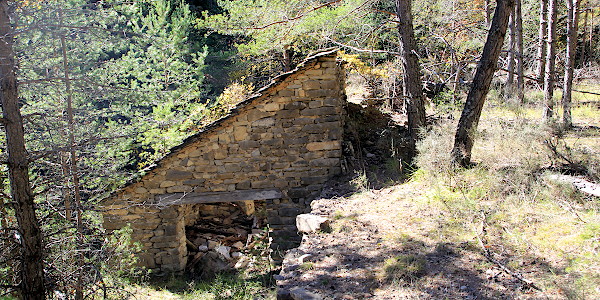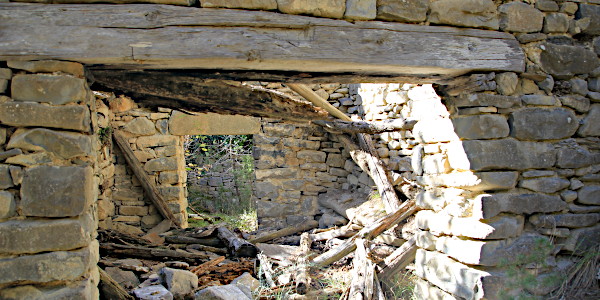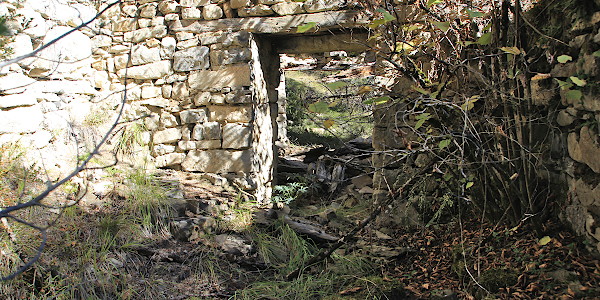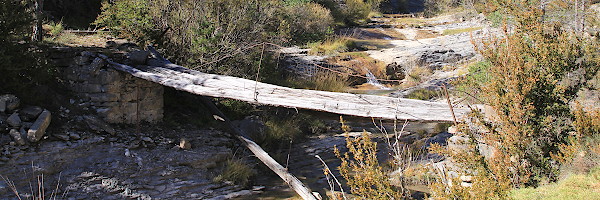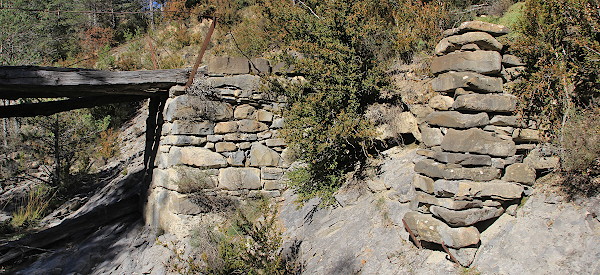Path: Introduction -
Visit the mills; catalogue - Ceresuela

Mills in Alto Aragón — molino harinero
Ceresuela

Ceresuela is an abandoned village in the
(Sobrarbe) at the upper reaches of the Río Yesa.
It is really remote and is probably best reached from walking the GR 15.1 towards Buisán and Fanlo.
Leave the GR at the (or ) and walk southwards. In Ceresuela follow the gravel road towards . Take the branch
to the left (down) where you are presented with two options to reach Yeba. Follow the path down until you reach the river bed.
At the crossing leave the road and walk downstream along the rivulet. You'll soon find the bridge and further to the East, the
remains of the mill.
Pictures: 26.x.2017


